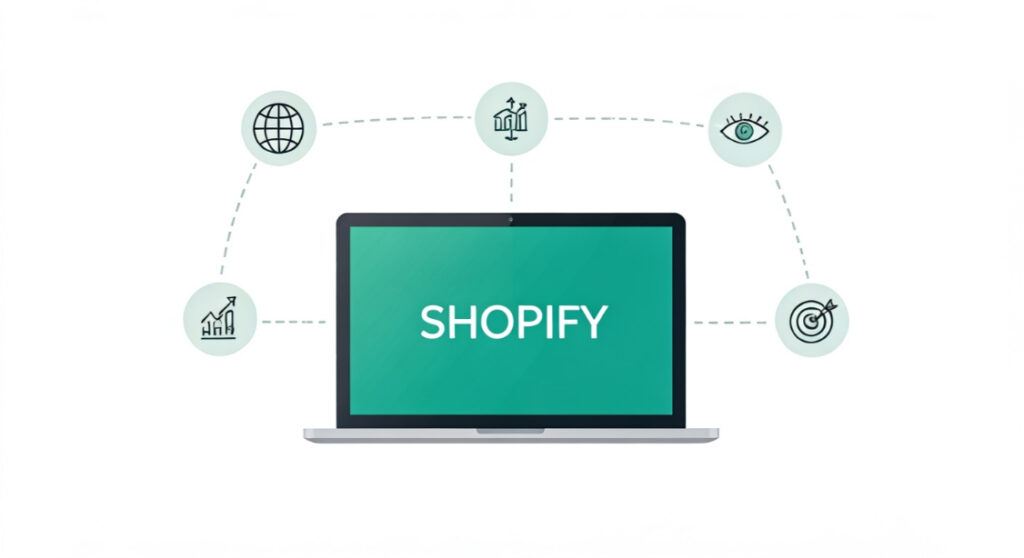Migrate osCommerce to Shopify: A Step-by-Step Guide


Looking to migrate your online store? Learn a comprehensive guide to migrate oscommerce to shopify, minimize disruptions, and maximize your growth potential.
Migrate osCommerce to Shopify: A Step-by-Step Guide
Why Migrate from osCommerce to Shopify?
- Ease of Use: Shopify boasts a user-friendly interface, making it easy to manage your store without requiring extensive technical knowledge. osCommerce, while customizable, often requires significant coding expertise.
- Scalability: Shopify is built to handle significant growth. Whether you’re experiencing seasonal surges or long-term expansion, Shopify’s infrastructure can adapt. osCommerce can struggle with high traffic volumes without extensive server optimization.
- Security: Shopify handles security updates and PCI compliance, reducing the burden on you to manage these critical aspects. osCommerce, being open-source, requires you to stay on top of security patches and vulnerabilities.
- App Ecosystem: Shopify’s app store offers thousands of apps to extend your store’s functionality, from marketing automation to advanced product options. osCommerce has a smaller and less actively maintained selection of add-ons.
- Theme Selection: Shopify offers a wide variety of professionally designed themes, both free and paid, allowing you to create a visually appealing and brand-consistent storefront. osCommerce theme options can be limited and may require more customization.
- Support: Shopify provides 24/7 support, giving you peace of mind knowing that help is available when you need it. osCommerce support is typically community-based, which can be less reliable.
- Marketing Tools: Shopify offers built-in marketing tools and integrations with popular marketing platforms, making it easier to promote your store and reach new customers.
Planning Your osCommerce to Shopify Migration
1. Audit Your osCommerce Store
- Products: Number of products, categories, attributes (sizes, colors, etc.), and variants.
- Customers: Total number of customers, their order history, and contact information.
- Orders: Order data, including order dates, amounts, shipping addresses, and payment methods.
- Content: Blog posts, pages (About Us, Contact Us), and other static content.
- Design: Theme customizations, logos, and branding elements.
- Functionality: Any custom modules or modifications you’ve made to your osCommerce store.
2. Backup Your osCommerce Data
3. Set Up Your Shopify Store
The Migration Process: A Step-by-Step Guide
1. Choose a Migration Method
- Manual Migration: This involves manually exporting data from osCommerce and importing it into Shopify. This is the most time-consuming and error-prone method, but it’s suitable for stores with a small number of products and customers.
- CSV Import: You can export your product, customer, and order data from osCommerce into CSV files and then import these files into Shopify. This is a more efficient option than manual migration but still requires some data formatting.
- Migration Apps: Several Shopify apps are specifically designed to migrate data from osCommerce. These apps automate the process and can handle complex data structures.
2. Install a Migration App (Recommended)
3. Configure the Migration App
4. Run a Test Migration
5. Perform the Full Migration
6. Verify the Migrated Data
- Products: Product titles, descriptions, prices, images, categories, and variants.
- Customers: Customer names, email addresses, shipping addresses, and order history.
- Orders: Order dates, amounts, shipping addresses, payment methods, and order statuses.
- Content: Pages and blog posts.
7. Migrate Your Design (Theme Customization)
8. Configure Your Shopify Store
- Payment Gateway: Set up your preferred payment gateway (e.g., Shopify Payments, PayPal, Stripe).
- Shipping Settings: Configure your shipping rates and methods.
- Taxes: Configure your tax settings to comply with local regulations.
- Domain Name: Connect your existing domain name to your Shopify store.
- Navigation: Set up your store’s navigation menu.
9. Test Your Shopify Store
10. Launch Your Shopify Store
Post-Migration Tasks and Optimization
1. Set Up 301 Redirects
2. Optimize Your Shopify Store for SEO
- Keyword Research: Identify the keywords that your customers are using to search for your products.
- On-Page Optimization: Optimize your product titles, descriptions, and meta descriptions with relevant keywords.
- Image Optimization: Optimize your product images with descriptive filenames and alt text.
- Mobile Optimization: Ensure that your Shopify store is mobile-friendly.
- Site Speed: Optimize your store’s loading speed.
3. Implement Marketing Strategies
- Email Marketing: Build an email list and send targeted email campaigns to your customers.
- Social Media Marketing: Promote your products and engage with your customers on social media.
- Paid Advertising: Use paid advertising platforms like Google Ads and Facebook Ads to reach a wider audience.
- Content Marketing: Create valuable content (blog posts, guides, videos) to attract and engage your target audience.